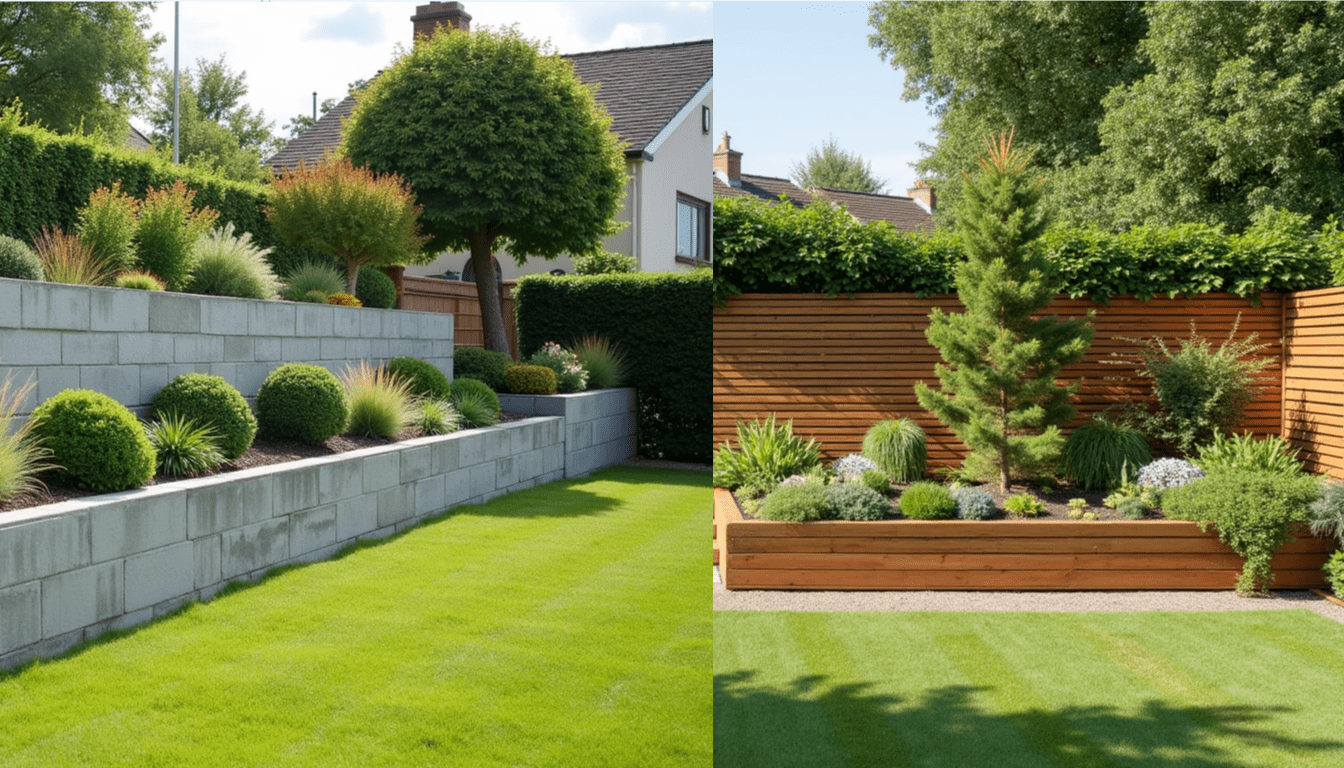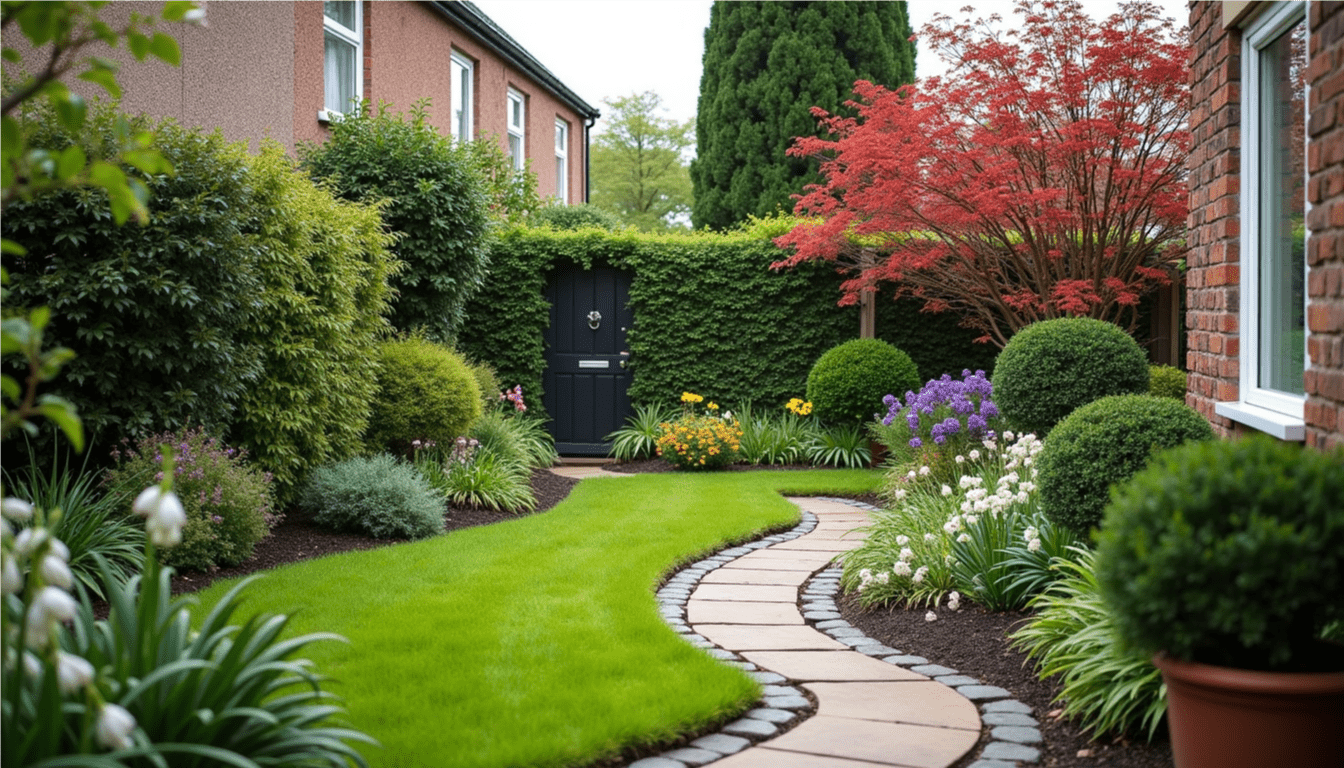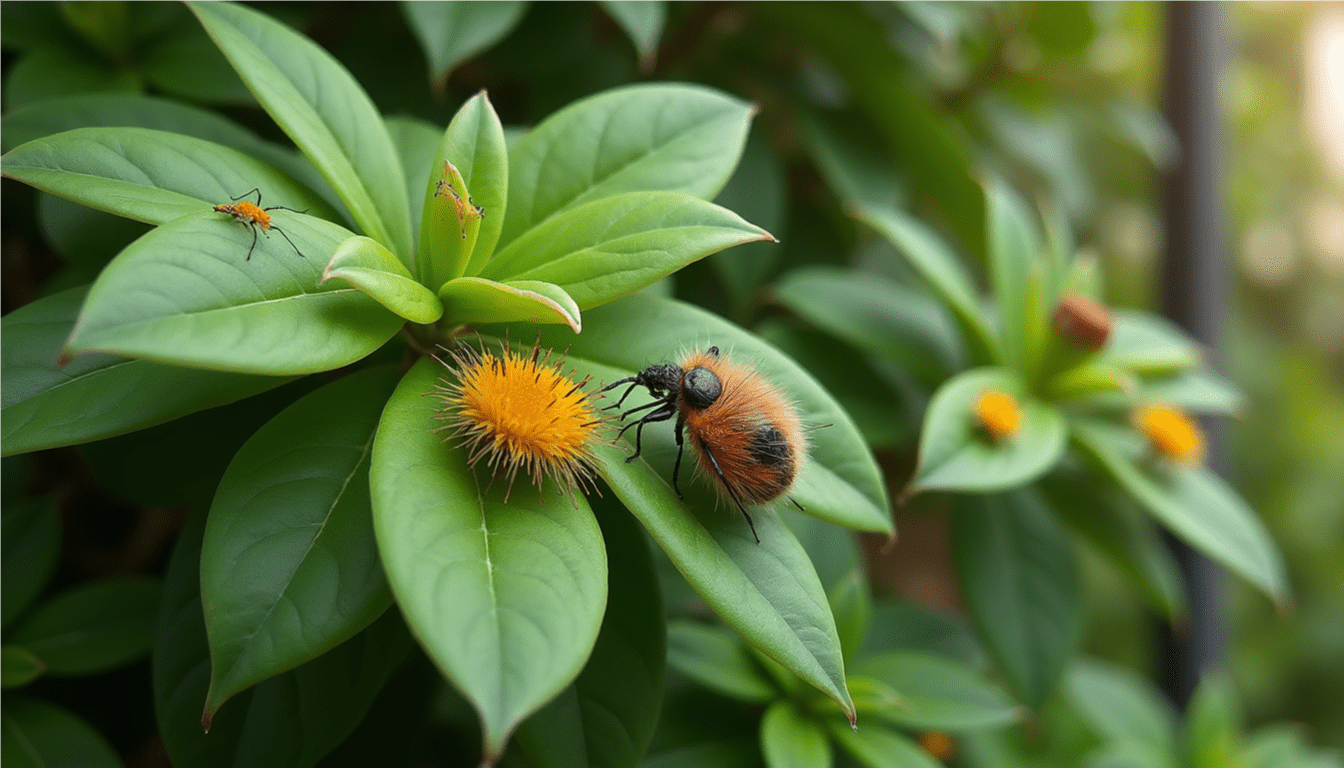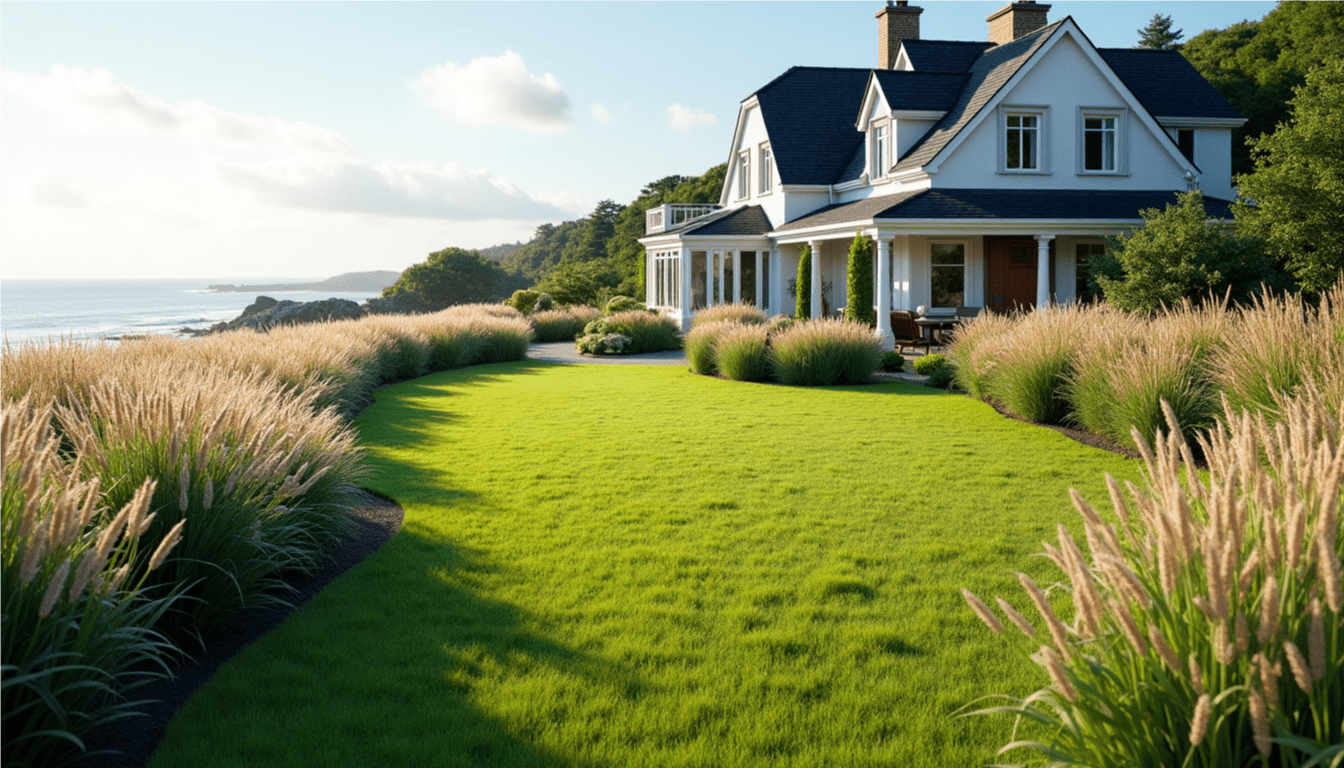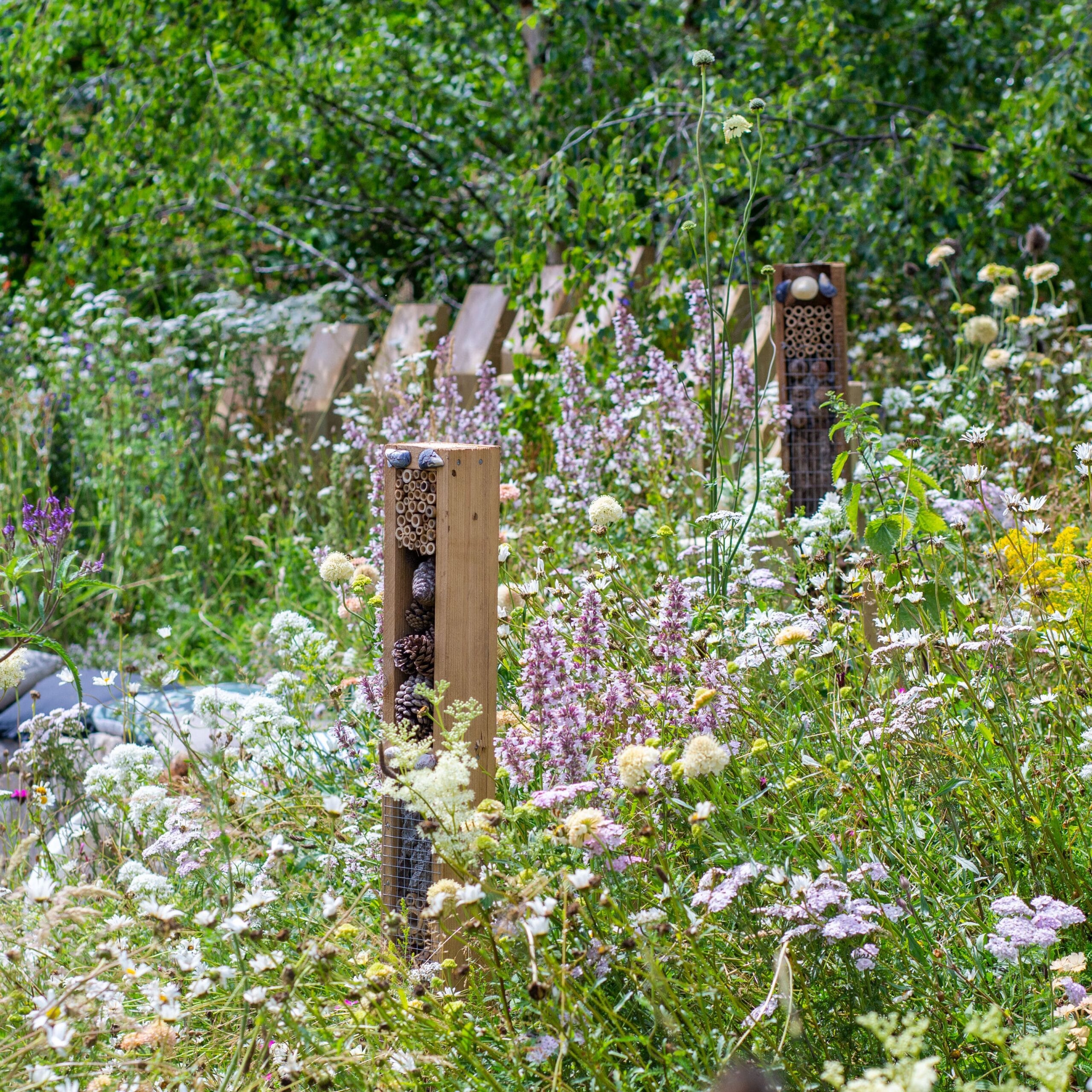
Key Takeaways
- Creating a wildlife-friendly garden in Dublin requires focusing on native plants that provide food and shelter for local species like hedgehogs, butterflies, and birds.
- Even small spaces such as balconies or window boxes can contribute significantly to Dublin’s biodiversity network.
- Water features, from simple bird baths to small ponds, are among the most effective additions for attracting diverse wildlife to your garden.
- Seasonal management practices, including leaving areas “untidy” during winter, are crucial for supporting wildlife year-round.
- Dublin Green Cities provides comprehensive resources for homeowners looking to transform their outdoor spaces into thriving wildlife habitats while enhancing property value.
Dublin’s gardens represent vital sanctuaries for wildlife in an increasingly developed urban landscape. As concrete replaces green spaces across the city, your garden—regardless of its size—can become a crucial lifeline for local biodiversity. With thoughtful design and maintenance, even the smallest outdoor space can transform into a thriving ecosystem supporting countless species.
Creating a wildlife-friendly garden doesn’t mean letting your outdoor space run wild. Rather, it’s about making intentional choices that balance aesthetic appeal with ecological function. Dublin Green Cities specializes in helping homeowners design beautiful gardens that serve as havens for local wildlife while enhancing property values and creating enjoyable outdoor living spaces.
Dublin’s Wildlife Needs Your Help: Why Garden for Nature
Dublin’s wildlife faces mounting challenges as urbanization intensifies. Native species that once thrived across the region now struggle to find suitable habitats, food sources, and safe corridors for movement. The city’s hedgehogs, bats, numerous bird species, butterflies, and bees all depend on green spaces for survival. By gardening with wildlife in mind, you’re not simply creating a pretty space—you’re participating in crucial conservation work.
Book a Landscape Garden Consultation
A personal creative landscape garden designed to bring your vision to life!
The benefits extend far beyond helping wildlife. A garden buzzing with pollinators and singing with birds creates a sensory haven that reduces stress and improves mental wellbeing. Research shows that interaction with nature, even in small doses, significantly boosts mood and cognitive function. Additionally, wildlife-friendly gardens typically require less maintenance than traditional landscapes once established, saving you time and resources in the long run.
Dublin’s climate presents unique opportunities for wildlife gardening. Our mild, maritime conditions support diverse plant life, while our relatively gentle seasons allow for year-round garden activity. The city’s position along important migratory routes also means your garden can provide critical rest stops for traveling species. Even small changes—leaving a corner unmowed or adding a simple bird bath—can make a substantial difference to local biodiversity.
Native Plants That Thrive in Dublin’s Climate
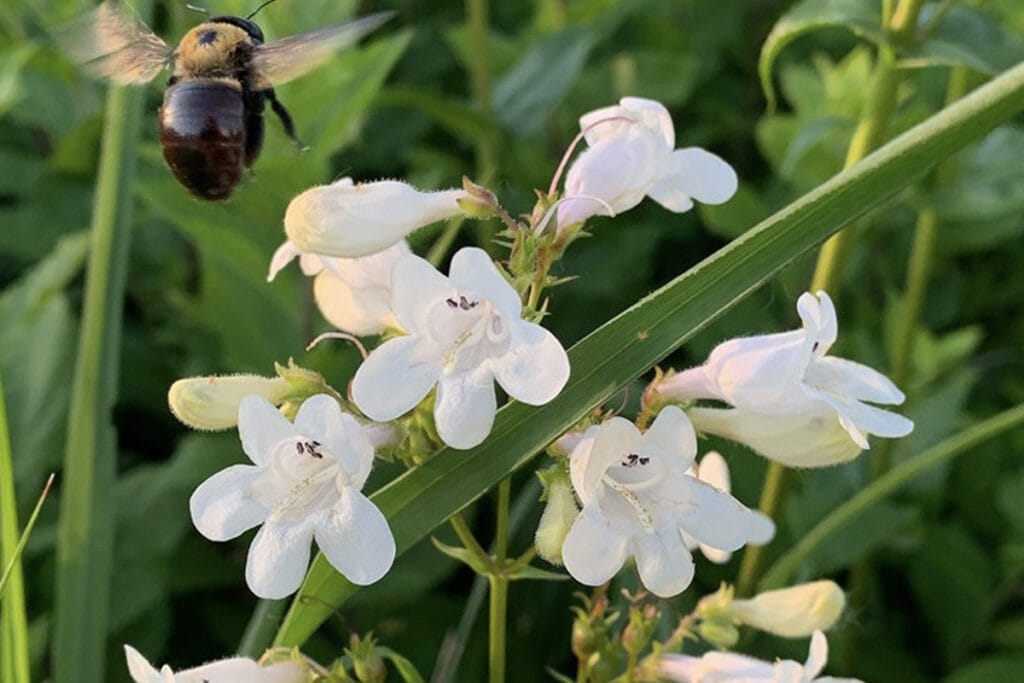
Native plants form the foundation of any successful wildlife garden. These species have evolved alongside local wildlife, creating interdependent relationships that exotic plants simply cannot replicate. In Dublin’s gardens, native plants require less maintenance, as they’re naturally adapted to local soil conditions, rainfall patterns, and temperature fluctuations. They’re also recognized and utilized by native wildlife, from the caterpillars that feed on specific host plants to the birds that rely on familiar berries.
When selecting plants, consider those that offer multiple benefits throughout the seasons. The best wildlife gardens provide a continuous supply of resources—spring nectar, summer seeds, autumn berries, and winter shelter. Native plants typically excel at this seasonal progression, creating a self-sustaining ecosystem that supports wildlife year-round with minimal intervention.
Dublin’s slightly alkaline soils and moderate rainfall create ideal conditions for many Irish natives that struggle elsewhere. By embracing these local conditions rather than fighting them, you’ll create a more resilient, lower-maintenance garden that thrives with less input from you.
Trees and Shrubs for Year-Round Wildlife Support
Trees and shrubs form the architectural backbone of wildlife gardens, providing crucial nesting sites, protective cover, and food sources throughout the year. In Dublin’s compact gardens, consider smaller native species like rowan (Sorbus aucuparia), which produces berries devoured by birds, or hawthorn (Crataegus monogyna), whose dense, thorny structure offers perfect nesting protection. Holly (Ilex aquifolium) delivers winter berries and evergreen shelter, while native willows (Salix species) support over 450 different insect species, making them powerhouse plants for biodiversity.
Flowering Plants That Attract Local Pollinators
Dublin’s pollinators face significant habitat loss, making garden flowers increasingly important for their survival. Native wildflowers like knapweed (Centaurea nigra), bird’s-foot trefoil (Lotus corniculatus), and red clover (Trifolium pratense) attract numerous bee species, while also supporting butterfly populations. Incorporate plants with different flower shapes to accommodate various pollinators—bell-shaped flowers for long-tongued bumblebees, open daisy-like blooms for hoverflies and short-tongued bees. Create flowering sequences that ensure nectar availability from early spring through late autumn, with special attention to early spring and late autumn when food sources are naturally scarce.
Summer Maintenance to Maximize Food Sources
Summer brings peak growth and activity to Dublin gardens. Focus on maintaining consistent water sources during dry spells, as birds and insects depend heavily on reliable hydration. Allow flowering plants to complete their blooming cycle before deadheading to ensure seed production for birds. Implement a rotation system for mowing any lawn areas, leaving sections untouched for 3-4 weeks to allow wildflowers like clover and self-heal to bloom, creating nectar highways through your garden.
Autumn Preparations for Winter Wildlife
Autumn garden management in Dublin requires a delicate balance between tidying and intentional “messiness.” Rather than removing all fallen leaves, create dedicated leaf piles in quiet corners where hedgehogs and insects can hibernate. Leave seedheads standing on plants like teasel, thistles, and sunflowers to provide natural bird feeders throughout winter. Cut back only one-third of your perennial plants, leaving the remainder as shelter and food sources during the lean months ahead.
Book a Landscape Garden Consultation
A personal creative landscape garden designed to bring your vision to life!
Winter Garden Care: What to Leave and What to Tidy
Winter brings unique challenges for Dublin’s wildlife, making your garden management decisions particularly impactful. Resist the urge to “clean up” everything—hollow stems provide crucial hibernation sites for beneficial insects, while seed heads offer essential food for birds when other sources are scarce. Focus tidying efforts on paths and seating areas, leaving the rest of the garden relatively undisturbed until late February or early March.
Consider creating hibernation stations by stacking logs in quiet corners or installing purpose-built hedgehog houses in sheltered locations away from prevailing winds. These simple structures can mean the difference between survival and death for vulnerable creatures during cold snaps. For more ideas, explore ways to create a wildlife-friendly garden.
Dublin’s relatively mild winters compared to inland areas mean some wildlife remains active year-round. Maintain clean water sources even during freezing temperatures by floating a small ball in bird baths or using solar-powered heaters for larger water features. This simple step provides a lifeline when natural water sources freeze solid.
Wildlife-Friendly Gardening Techniques
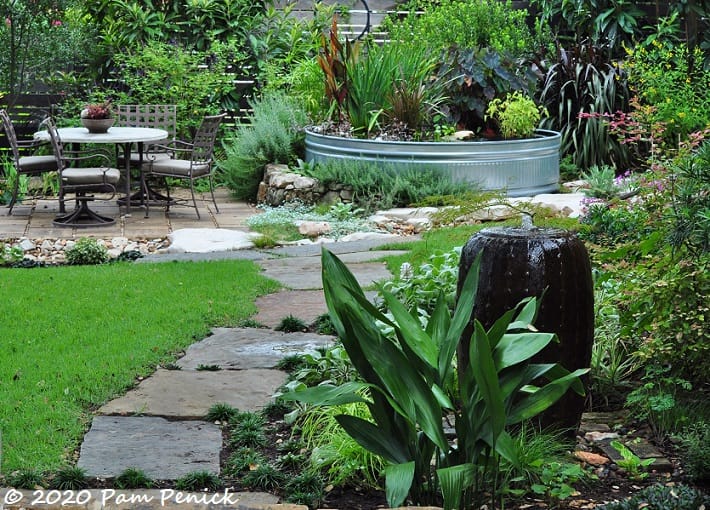
Successful wildlife gardening in Dublin requires moving beyond simply selecting the right plants—it demands a fundamental shift in gardening philosophy. Embracing natural processes rather than fighting against them creates self-sustaining systems that support diverse wildlife with minimal intervention. This approach also reduces maintenance needs while creating more resilient gardens that withstand Dublin’s increasingly unpredictable weather patterns.
The foundation of wildlife-friendly gardening lies in building healthy soil ecosystems. Dublin’s urban soils often lack the microbial diversity found in natural settings, creating a bottleneck that limits plant health and wildlife support. Prioritize soil-building practices like mulching with leaf litter, avoiding unnecessary digging, and eliminating synthetic fertilizers that disrupt natural soil processes. These simple changes foster the underground food webs that ultimately support everything from songbirds to hedgehogs.
Chemical-Free Pest Control Methods
Conventional pesticides create wildlife-free zones by eliminating not just target species but entire food chains. Instead, harness Dublin’s natural pest control systems by attracting beneficial predators. Plant umbellifers like fennel and cow parsley to draw predatory wasps and hoverflies that control aphids. Install bat boxes to support these remarkable creatures that can consume thousands of mosquitoes nightly. Introduce native ladybirds in spring to manage pest populations before they explode.
For persistent pest issues, targeted interventions cause minimal collateral damage. Copper tape deters slugs from vulnerable plants without poisoning the thrushes and hedgehogs that feed on them. Nematode solutions specifically target vine weevils without harming beneficial soil organisms. Remember that a small amount of plant damage indicates a functioning ecosystem—perfect leaves often signal ecological imbalance rather than garden success.
Composting to Boost Soil Health and Biodiversity
Composting transforms garden waste into wildlife habitat and plant nutrition, creating a closed-loop system that benefits your entire garden ecosystem. Dublin’s temperate climate supports year-round decomposition, making composting particularly effective. Create both traditional compost bins for kitchen and garden waste and dedicated leaf mold areas for autumn leaves. These different decomposition systems support distinct communities of fungi, bacteria, and invertebrates that enhance soil structure and plant health while providing food for birds, hedgehogs, and amphibians.
Smart Watering Practices for Changing Weather Patterns
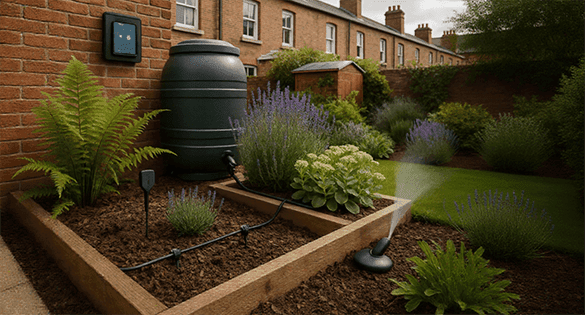
Dublin’s rainfall patterns are becoming increasingly erratic, with prolonged dry spells followed by intense downpours. Install water butts at downpipes to capture rainfall, providing chemical-free water for both plants and wildlife during dry periods. Direct overflow from water collection systems into rain gardens planted with moisture-loving native species like flag iris, meadowsweet, and purple loosestrife to create ephemeral wetland habitats that support specialized wildlife.
When watering becomes necessary, focus on deep, infrequent irrigation that encourages root development rather than frequent shallow watering. Apply water directly to soil rather than foliage to reduce fungal issues and water loss through evaporation. Morning watering maximizes plant uptake while reducing slug activity that evening watering can encourage.
Consider implementing swales—shallow channels that follow contour lines—in larger gardens to slow water movement across the landscape. These simple earthworks prevent erosion during heavy rainfall while allowing water to infiltrate deeply, creating natural drought resistance and supporting healthier plant communities that better withstand climate extremes.
Dublin’s Wildlife Garden Water Conservation Tips
• Install multiple rain barrels connected in series to maximize collection capacity
• Apply 5-10cm of organic mulch around plants to reduce evaporation by up to 70%
• Group plants with similar water needs together in hydrozones
• Consider permeable paving options that allow rainwater to soak into soil rather than running off
• Use ollas (unglazed clay pots) buried near thirsty plants for efficient subsurface irrigation
Water features deserve special consideration in Dublin’s wildlife gardens. Even modest water sources attract disproportionate wildlife diversity, from bathing birds to breeding amphibians. Design water features with varied depths and gently sloping sides to accommodate different species and provide escape routes for small creatures. Position them where you can observe wildlife visitors from indoor living spaces, creating year-round connection with nature regardless of weather conditions.
Small Space Solutions for Dublin Urban Gardens
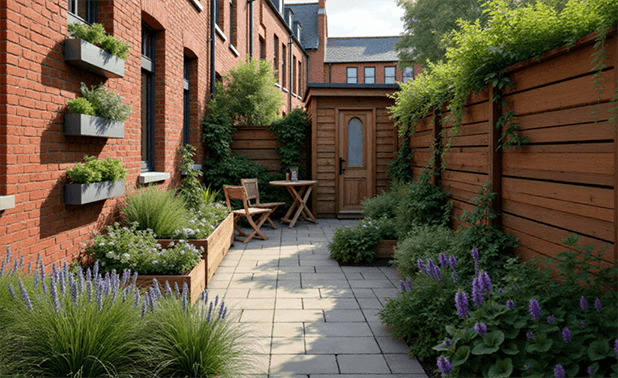
Dublin’s housing pattern of compact gardens and balconies presents unique wildlife gardening challenges and opportunities. Smaller spaces concentrate resources, potentially creating biodiversity hotspots when properly managed. Vertical surfaces—walls, fences, trellises—multiply the effective growing area while creating diverse microclimates from sunny and exposed to shaded and protected. This spatial diversity supports a wider range of plant species and their associated wildlife than might initially seem possible in limited square footage.
Balcony Biodiversity: Container Planting for Wildlife
- Use large containers (minimum 40cm diameter) where possible to maintain consistent soil moisture and temperature
- Select native wildflowers with extended blooming periods like bird’s-foot trefoil and knapweed
- Incorporate miniature water features using sealed containers with submerged shelves
- Install small insect hotels on sunny walls to support solitary bees
- Grow vertical vines like native honeysuckle to maximize nectar production in limited space
Container planting requires thoughtful plant selection to thrive in Dublin’s conditions. Choose drought-tolerant natives like sea campion and bird’s-foot trefoil for exposed south-facing balconies that experience intense summer heat. For north-facing situations, woodland edge species like foxgloves and primroses thrive in the cooler, shadier conditions. Grouping containers creates more stable microclimates and increases humidity, benefiting both plants and wildlife.
Soil management becomes particularly crucial in container gardens. Use peat-free compost blended with loam-based soil to provide both drainage and water retention. Top containers with fine gravel mulch to reduce evaporation and discourage fungus gnats. Consider self-watering containers for thirstier plants, ensuring consistent moisture through Dublin’s occasionally dry summer periods.
Remember that even the smallest container garden connects to Dublin’s wider ecosystem through flying insects and birds. Your balcony or window box might provide the critical nectar source that sustains a bumblebee colony or offers the seeds that help finches survive winter. No space is too small to contribute meaningfully to urban biodiversity.
Vertical Gardens and Green Walls
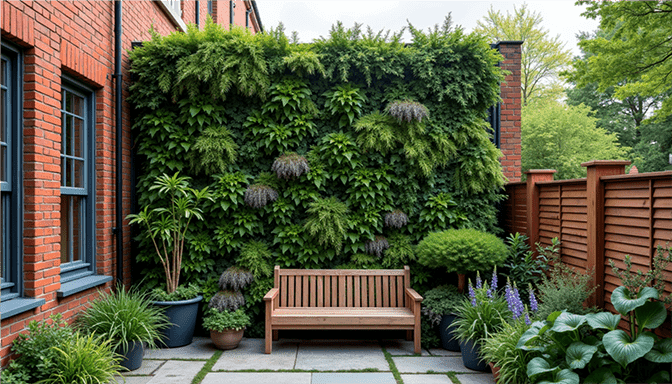
Vertical growing systems maximize wildlife habitat in Dublin’s compact urban spaces. Modern green wall systems range from simple pocket planters to sophisticated hydroponic setups, all offering opportunities to incorporate native plants that support pollinators and birds. Position vertical gardens to address specific site challenges—cooling south-facing walls that overheat in summer, capturing rainwater runoff from buildings, or creating privacy screens that double as wildlife habitat. Plant selection should prioritize structural diversity, incorporating trailing species like ivy-leaved toadflax alongside upright plants like foxgloves and architectural ferns.
Community Garden Opportunities in Dublin
Dublin’s community gardening movement offers expanding opportunities for wildlife gardening beyond your own property. The city council’s Community Garden Initiative provides land, resources and expertise for neighborhood groups establishing shared growing spaces with ecological focus. These collaborative projects allow for larger-scale interventions like community orchards, wetland creation, and meadow establishment that might be impractical in individual gardens. They also create valuable knowledge-sharing networks where gardeners exchange locally-proven techniques and native plant materials, accelerating the development of effective wildlife gardening practices throughout Dublin.
How Your Garden Connects to Dublin’s Wider Ecosystem
Individual wildlife gardens gain significance when viewed as components of a larger ecological network stretching across Dublin. Your garden decisions ripple outward, influencing biodiversity far beyond your property boundaries. Urban ecology research increasingly demonstrates that connected habitat patches sustain wildlife populations more effectively than isolated refuges, regardless of size. By coordinating efforts with neighbors and aligning with Dublin’s Biodiversity Action Plan initiatives, your garden becomes part of coherent habitat corridors that enable species movement through otherwise hostile urban landscapes.
Creating Wildlife Corridors Through Neighborhoods
Wildlife corridors function as biological highways, allowing animals to traverse urban environments safely while accessing scattered resources. In Dublin neighborhoods, even simple interventions create effective corridors—removing unnecessary barriers between gardens, installing consistent water sources at regular intervals, or coordinating hedge planting to create continuous aerial pathways for birds and bats. The Dublin Hedgerow Project provides resources and native plants for neighborhood-scale hedgerow restoration, reconnecting fragmented habitats while preserving the distinctive character of Dublin’s suburban landscapes. These collaborative efforts transform isolated wildlife gardens into interconnected systems with significantly enhanced ecological resilience.
Monitoring and Recording Wildlife Visitors
Documenting the wildlife that visits your garden creates valuable data while deepening your connection to Dublin’s ecosystem. Start with simple observation sessions at different times of day—dawn and dusk often reveal surprising visitors missed during normal garden activities. Record sightings in a dedicated journal or use smartphone apps like the National Biodiversity Data Centre’s reporting tools that feed directly into national conservation databases.
Essential Wildlife Monitoring Equipment for Dublin Gardens
• Basic binoculars (8×42 magnification ideal for garden settings)
• Wildlife identification guides specific to Eastern Ireland
• Motion-activated trail camera for nocturnal visitors
• Smartphone with iRecord Butterflies or Irish Wildflowers apps
• Hand lens for examining smaller insects and plant details
Consider installing a basic wildlife camera to capture nocturnal visitors like hedgehogs, foxes, and badgers that might otherwise go unnoticed. Position cameras near wildlife highways—gaps in fences, quiet garden corners, or established feeding stations—for best results. Even inexpensive models can reveal surprising biodiversity, especially when left in position for extended periods. For more tips on creating a wildlife-friendly garden, check out this guide on seven ways to create a wildlife-friendly garden.
Participate in coordinated citizen science initiatives like the Irish Garden Bird Survey or the Flower-Insect Timed Count, which provide structured protocols for gathering scientifically valuable data. These national projects help researchers track population trends while giving you deeper insight into how your garden contributes to conservation efforts. Dublin’s unique position between mountains and sea makes your observations particularly valuable for understanding urban wildlife adaptation.
Monitoring goes beyond simple species identification—note behaviors that indicate successful habitat creation. Evidence of breeding (nest building, fledglings, larvae), feeding activity on specific plants, or seasonal patterns of visitation all confirm that your garden functions as genuine habitat rather than merely attracting passing wildlife. These observations guide future garden improvements while providing deeply satisfying confirmation of your conservation impact.
Local Resources and Support for Wildlife Gardeners
Dublin offers exceptional resources for wildlife gardeners, from specialized native plant nurseries to active community organizations. The Dublin Naturalists’ Field Club organizes regular walks focusing on urban wildlife identification, while the Irish Wildlife Trust provides specific guidance for Dublin’s ecological conditions. Local libraries maintain extensive gardening collections with specialized sections on Irish native plants and wildlife habitat creation, often supplemented by seed libraries offering heritage and native plant varieties adapted to local conditions.
Dublin Garden Centers with Native Plant Selections
Several Dublin garden centers have responded to growing interest in wildlife gardening by developing specialized native plant sections. Howbert & Mays in Monkstown maintains an extensive selection of Irish native perennials, while Johnstown Garden Centre dedicates significant space to pollinator-friendly native plants. For more specialized needs, Wild Ireland Plants in County Wicklow (a short drive from Dublin) grows rare Irish natives from ethically sourced wild seed, including difficult-to-find woodland understory species perfect for shaded Dublin gardens. Always confirm plant origins when purchasing, as some “native” offerings actually originate from continental European stock that may not support local wildlife effectively.
Community Groups and Workshops
Dublin’s vibrant community gardening network offers regular workshops on wildlife gardening techniques. The Biodiversity in Schools initiative provides weekend workshops open to the public, covering practical topics from creating mini-meadows to building insect hotels. These hands-on sessions typically include take-home materials and ongoing support through social media groups where participants share progress and troubleshoot challenges.
Dublin City Council’s Environmental Awareness Office coordinates seasonal wildlife gardening events across city parks, demonstrating techniques appropriate for different garden settings. Their autumn leaf mulching workshops and spring native plant exchanges are particularly valuable for beginning wildlife gardeners. Most events are free but require pre-registration through the council’s website, with family-friendly options available during school holidays.
Government Grants and Initiatives
Several funding streams support Dublin wildlife gardening projects at various scales. The Community Environment Action Fund provides grants of €500-€5000 for neighborhood-scale initiatives like community orchards or pollinator corridors, while the Heritage Council offers specialized funding for projects preserving traditional Irish garden plants and techniques. For individual homeowners, the Sustainable Energy Authority of Ireland offers grants covering rainwater harvesting systems that can be integrated with wildlife pond creation, addressing both conservation and water management goals. Applications typically open annually in February, with funding decisions announced by April to align with the growing season.
The Joy of Watching Your Garden Come Alive
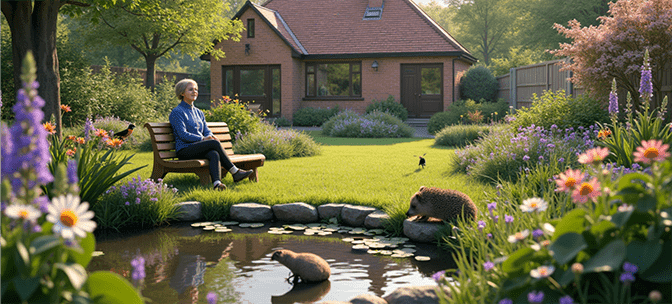
Beyond ecological benefits, wildlife gardening delivers profound personal rewards as your space transforms from static landscape to dynamic ecosystem. The first robin investigating a newly installed bird bath, bumblebees discovering freshly planted foxgloves, or a hedgehog exploring a purpose-built hibernation house—these moments connect you to nature’s rhythms in ways increasingly rare in urban settings. Many wildlife gardeners describe a fundamental shift in perception, from seeing their garden as property to recognizing it as a relationship with the living world.
This deeper connection develops gradually as you observe seasonal patterns and interactions between species. You might notice how great tits time their nesting to caterpillar emergence, or how certain butterflies appear precisely when their preferred nectar plants bloom. These insights reveal the intricate synchronicity of natural systems that operate largely unnoticed in urban environments. By creating space for these relationships to flourish, your garden becomes not just a habitat for wildlife but a window into the complex ecological processes that sustain all life—a source of endless fascination and learning right outside your door. For more tips, explore how to create a wildlife-friendly garden.
Frequently Asked Questions
Wildlife gardening generates many questions as gardeners navigate the balance between supporting nature and maintaining aesthetically pleasing, functional outdoor spaces. The following answers address common concerns specific to Dublin’s conditions and wildlife needs. Remember that successful wildlife gardening involves ongoing experimentation and adaptation to your garden’s unique conditions—there are rarely absolute right or wrong approaches.
For questions not addressed here, Dublin’s network of wildlife gardening enthusiasts provides valuable support through social media groups and community workshops. Local expertise often proves more relevant than generic gardening advice, as it accounts for Dublin’s specific soil conditions, rainfall patterns, and native species requirements.
How long will it take to attract wildlife to my Dublin garden?
Wildlife typically responds to habitat improvements much faster than many gardeners expect, especially in Dublin where green spaces are increasingly fragmented. Mobile species like birds and flying insects often discover new resources within days or even hours of installation. A new bird feeder might attract visitors the same afternoon, while butterfly-friendly plants can draw pollinators as soon as they bloom.
Other wildlife requires more time, following seasonal patterns and gradual habitat discovery. Hedgehogs and frogs might take several months to locate and begin utilizing suitable habitat, often appearing first in autumn as they search for hibernation sites. Soil biodiversity develops more gradually, with earthworm populations and beneficial fungi potentially taking 1-2 years to fully establish after switching to organic methods.
The diversity and abundance of wildlife increases over time as your garden’s ecosystem matures. Gardens maintained with wildlife-friendly practices for 3+ years typically support significantly more species than newer conversions, reflecting the development of complex food webs and habitat niches. This progression makes wildlife gardening increasingly rewarding over time, with each season bringing new discoveries as word spreads through the wildlife community about the resources your garden offers.
Can I create a wildlife garden if I have pets?
Pets and wildlife can successfully coexist with thoughtful management. For cat owners, installing high-mounted bird feeders with wide clearance zones prevents ambush predation, while bell collars and keeping cats indoors during dawn and dusk (peak bird activity periods) significantly reduces hunting success. Consider creating dedicated “cat-free zones” using physical barriers that allow smaller wildlife safe access while excluding feline visitors.
Dog owners should designate specific garden paths and play areas, leaving other sections undisturbed for wildlife. Training dogs to avoid wildlife areas preserves habitat integrity while maintaining exercise space. For particularly energetic dogs, consider installing wildlife-friendly features in less accessible garden sections—elevated bird baths, roof-mounted bat boxes, or fenced pond areas allow wildlife to flourish alongside canine companions.
Which Dublin wildlife species need the most help?
Dublin’s wildlife faces varied challenges, but certain species have experienced particularly sharp declines requiring targeted support. Hedgehogs have lost significant habitat to development and road networks, making connected garden habitats with suitable hibernation sites increasingly crucial for their survival. Swift populations have declined dramatically as building renovations eliminate traditional nesting cavities in older structures, creating urgent need for dedicated swift boxes on suitable buildings.
- Hedgehogs – need connected gardens with leaf piles and log refuges
- Swifts – require specially designed nest boxes on buildings 5m+ high
- Solitary bees – 85% decline in some species due to habitat loss
- House sparrows – colony-nesting birds needing dense shrubs and multiple nest sites
- Common frogs – declining due to wetland drainage and garden pond removal
Pollinators face perhaps the most severe challenges, with one-third of Ireland’s bee species threatened with extinction. Dublin gardens can provide critical habitat through diverse native plantings that ensure continuous flowering from March through October. Focus particularly on early spring and late autumn flowering plants that bridge seasonal gaps when natural food sources are scarce.
While focusing on struggling species, remember that comprehensive habitat creation benefits all wildlife. Gardens with diverse vegetation layers (ground cover to tree canopy), varied water sources, and minimal chemical use create resilient ecosystems supporting everything from soil microorganisms to top predators like sparrowhawks and foxes. This holistic approach creates self-sustaining systems requiring minimal intervention while maximizing biodiversity gains.
Do I need to completely redesign my garden to make it wildlife-friendly?
Transitioning to wildlife-friendly gardening works best as an incremental process rather than complete redesign. Start by identifying existing wildlife-friendly elements—mature trees, established hedges, water features—and prioritize their preservation and enhancement. Then implement simple additions like bird feeders, pollinator plants, or insect hotels that complement your current garden while introducing wildlife support. This gradual approach proves less overwhelming while allowing you to observe wildlife responses and adjust accordingly.
Consider adopting a zone system, designating certain garden areas for intensive wildlife focus while maintaining others primarily for human use. This balanced approach accommodates both conservation goals and practical needs like entertaining spaces or children’s play areas. Over time, you might expand wildlife zones or integrate wildlife-friendly elements into human-focused areas as you discover approaches that satisfy both purposes. Remember that aesthetics and ecology aren’t mutually exclusive—many native plants offer exceptional ornamental value while supporting wildlife, allowing design choices that enhance both visual appeal and biodiversity.
How can I deal with slugs and snails without harming beneficial wildlife?
Slug management requires strategic approaches that target problem areas while preserving these creatures’ ecological role. Rather than seeking total elimination, focus protection on vulnerable plants like hostas and vegetable seedlings using physical barriers. Copper tape around raised beds creates effective boundaries slugs won’t cross, while wool pellets and crushed eggshells provide similar deterrence without toxicity. Evening hand-picking during wet weather can significantly reduce populations in specific garden sections without collateral damage to beneficial wildlife.
Cultural practices significantly reduce slug problems without intervention. Planting slug-resistant species adapted to Dublin’s conditions minimizes damage while supporting other wildlife. Time plantings strategically—establishing seedlings during drier periods reduces vulnerability during their most susceptible stage. Creating habitat for natural slug predators like hedgehogs, frogs, and ground beetles establishes sustainable biological controls that maintain balanced populations without eliminating these important decomposers entirely.
For persistent problems, consider targeted nematode treatments (Phasmarhabditis hermaphrodita) during warm, wet periods when slugs are most active. These microscopic organisms specifically target slugs without affecting other wildlife, making them suitable for ecological gardens. Apply to soil rather than plants, focusing on areas with highest slug activity. Unlike broad-spectrum molluscicides, nematodes integrate into natural soil food webs without disrupting the garden’s ecological balance.
Book a Landscape Garden Consultation
A personal creative landscape garden designed to bring your vision to life!

